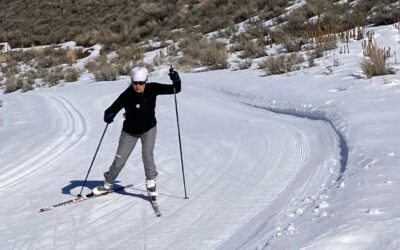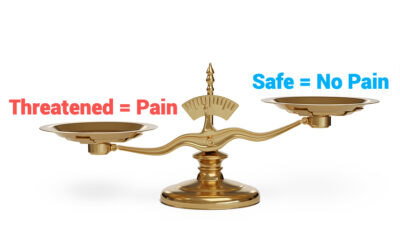(Courtney R The functions of breathing and its dysfunctions and their relationship to breathing therapy International Journal of Osteopathic Medicine 12 (2009) 78-85)
Honestly, I should have known. The first thing I heard during my postural assessment many years ago was, “You don’t breathe well.” Huh? What does that have to do with my back and hip pain? I had no idea. And since no one told me anymore at that time, I let it go.
Now, this idea of faulty breathing has continually come up during my recovery. A couple years following my initial assessment, a structural integration therapist informed me that I couldn’t get much air into the back of my lungs. My upper body and rib cage were too tight and restricted. And there it was: a second person noticed it.
Later, I attended a course that the Postural Restoration Institute (PRI) held on Myokinematic Restoration. While there, I thought they would teach me about the pelvis and hip. Well, they did, but the first note I wrote down was Diaphragm. Because I was compelled to quickly attend the next course, Postural Respiration, they used me as the sample subject. So, I received a manual treatment to reshape my diaphragm. The result? You guessed it. The pain was excruciating! The room fell silent while the instructor worked on me, my classmates sensing my distress. When I sat up, I had a pounding headache, and my hip and knee were popping. By this point, they’d convinced me. My breathing and my pain are connected!
And finally, as if I needed more evidence that I needed to pay a lot more attention to my breathing, I started working with an Optimal Breathing coach and took the breathing test at breathing.com. As expected, I earned low scores. So, six years after many different people told me that I don’t breathe well, I’m finally learning how.

 Why does poor breathing cause low back pain?
Why does poor breathing cause low back pain?
It’s complicated! Let me explain. First, realize that there are forces acting on the low back from above and below. Above is the diaphragm, and below are the hip flexors, the psoas and iliacus muscles. The fascia of these muscles connects them in movement. Tom Myers, originator of the Anatomy Trains Myofascial Meridians, refers to this continuous line of tissue as “the cobra.” If you look at the Anatomy Trains image shown to the right, the cobra is the maroon line.
When you look at the image, you can see the rounded head of the cobra in the rib cage, which represents the diaphragm in the relaxed position. Now, notice that it attaches to the lumbar spine, as does the psoas, which extends downward from its spinal attachment across the front of the hip and into the top of the leg bone, femur. Therefore, changes in the position of the diaphragm can affect pelvic and leg position, and vice-versa. Myers said it well: the diaphragm is rooted to the lower body through the leg.
 The diaphragm is the primary muscle of inspiration, breath. When you inhale, the diaphragm moves down towards the pelvis and flattens. Then, when you exhale, breathing out air, the diaphragm moves back up into the rib cage and returns to its domed position. For many people, however, the diaphragm does not fully re-dome and remains in a slightly flattened position upon exhale.
The diaphragm is the primary muscle of inspiration, breath. When you inhale, the diaphragm moves down towards the pelvis and flattens. Then, when you exhale, breathing out air, the diaphragm moves back up into the rib cage and returns to its domed position. For many people, however, the diaphragm does not fully re-dome and remains in a slightly flattened position upon exhale.
The lengthened diaphragm from an incomplete exhale lifts the rib cage up and away from the spine. This upward pull brings the lumbar vertebrae and discs forward and up with it increasing the arch in the low back.
When this upward-pulling action is combined with the downward pull of tight hip flexors (due to extended sitting or overuse with activities like cycling, walking or running), the arch in the lower back is further exaggerated, which creates dangerous compressive forces on the lower spine. This results in disc injuries, spinal degeneration and muscle imbalances. Ouch!
Summary
Basically, lower back pain can result from poor breathing mechanics because of the connection of the diaphragm and hip flexors to the lumbar vertebrae. The diaphragm pulls up while the hip flexors pull down creating strain in the low back. In my personal therapy and with my clients, I have been focused on only the lower half of the line, the hip flexors. With this new understanding of the interaction of the diaphragm on the back, hips and legs, though, I will be including this upper part of the chain in my approach to treatment.
Although I have only been working on my breathing for a couple weeks, I am noticing changes. In addition, I have had some encouraging results with a couple clients. My back is less stressed and my breathing feels deeper and easier. I’m hopeful that this is the final link in unraveling the back pain that has plagued me for over seven years. “Breath is Life” and so much more. Breathe Well!



